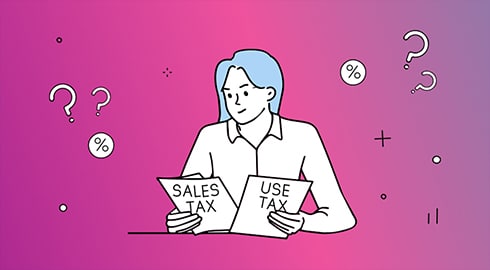Too many ecommerce businesses rely on simple search queries like ‘tax rate for zip code’ when it’s time to calculate their transaction sales tax rates. However, as our blog delves deeper, relying on ZIP codes to work out your sales tax applicability and collecting customer information alone is a surefire formula for getting unreliable results from your sales tax calculator.
Let’s ZIP through the reasons why.
Why are ZIP codes unreliable in sales tax calculations?
Happy 60th birthday, ZIP codes!
Using ZIP codes to figure out sales tax rates means depending on a system born on July 1, 1963. (PS. Happy anniversary, ZIP codes!) The issue isn’t that ZIP codes are sixty years old; they’re still an ultra-reliable way to pinpoint geographical locations in the United States. However, when dealing with the ever-changing legal frameworks of the U.S. tax system, their aim is often way off.
How come?
ZIP code databases are slow to keep up with changes
When sales tax rates change (which is often), ZIP code databases may need to be updated faster to record the changes.
Zip codes don’t align with sales tax jurisdictions
ZIP codes often cross multiple sales tax jurisdictions, meaning a single code may encompass areas with multiple sales tax rates. As a finance professional, you know that human error is why sales tax calculations inevitably go wonky. This time, it’s caused by assuming all ZIP codes are subject to the same sales tax rate.
Zip codes lack granularity
ZIP codes are a near-perfect system for pinpointing geographic areas (just ask the US Postal Service). But they’re far less perfect at identifying modern American sales tax jurisdictions.
We can’t stress this enough: especially if you’re a fast-growing e-commerce company, your sales tax calculations are a hot mess if you’re using ZIP codes alone.
Examples of when ZIP codes lead to incorrect tax rates
We’re still calculating sales tax by ZIP code. What could go wrong?
Multiple tax rates within a ZIP code
A single ZIP code can cover lots of areas with different sales tax rates. For instance, ZIP code 90210 in Beverly Hills, California, includes Beverly Hills and a small portion of LA.
While Beverly Hills has no sales tax, LA does. If a business relies solely on the ZIP code to determine the sales tax rate, it’s collecting sales tax for customers residing in the Los Angeles portion of the ZIP code incorrectly while being none the wiser.
ZIP codes crossing state lines
ZIP codes can cross state lines, and the applicable sales tax rate can vary significantly. For example, ZIP code 07654 straddles the border between New Jersey and New York.
For example, a customer living in a New York area that shares a ZIP code with New Jersey could be mistakenly charged New Jersey’s sales tax rate, leading to either an incorrect tax charge or a failure to charge the appropriate sales tax for New York.
Stay compliant with ZIP codes
If only staying on the right side of the US sales tax system was as simple as not using ZIP codes alone. Well, with automated US sales tax solutions, it can be.
What should you be looking out for if you’re in the market?
1. Real-time sales tax rate updates
Look for an automated sales tax solution that can access real-time tax rates, ensuring your business applies the most up-to-date tax rates to transactions. This eliminates the risk of errors due to outdated ZIP code databases.
2. Consideration of all relevant factors
Advanced sales tax software can consider all relevant factors that influence the sales tax rate, including the customer’s exact location, the type of product or service being purchased, and the time of purchase. This ensures that the correct sales tax rate is applied to each transaction.
3. Automated sales tax collection
Sales tax automation tools can automate the collection of sales tax, preventing the need for manual calculations and reducing the risk of human error. This streamlines the sales tax compliance process and saves businesses time and resources.
4. Identification and registration for sales tax licenses
Automated sales tax solutions can help businesses identify the jurisdictions where they have nexus and the need to register for sales tax licenses. This ensures that companies are meeting their tax obligations and avoiding potential penalties.
5. Reduced risk of non-compliance
By utilizing technology solutions, businesses can significantly reduce the risk of non-compliance with sales tax regulations. This can save companies from penalties and interest charges and protect their reputation.
Complyt zips all of these benefits up in a powerful, human-friendly dashboard
Is your e-commerce company taking off in a big time? Complyt can put your sales tax calculations on autopilot and scale with you as you grow. Take a tour.
FAQ
Are there ZIP codes with no sales tax?
ZIP codes with no sales tax typically refer to areas where the local jurisdiction does not impose a sales tax. These can include Non-Taxable Jurisdictions, Special Exempt Zones, and Tax Holidays.
It’s important to note that while a ZIP code might fall in a non-taxable state or area, this does not always mean that every transaction within that ZIP code is exempt from sales tax. Other factors, such as the product or service type and specific local tax laws, can influence taxability.
Additionally, some states with no general sales tax may still impose other taxes, such as excise or special local taxes.









